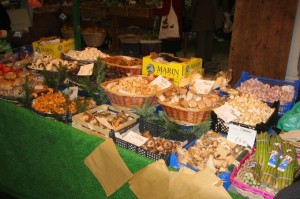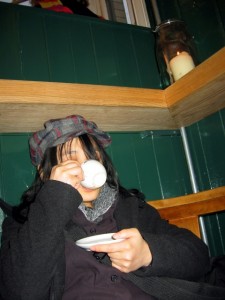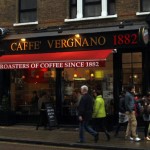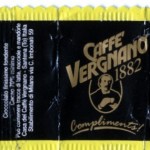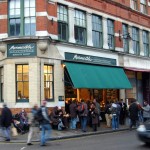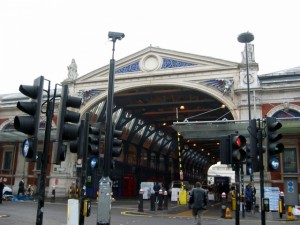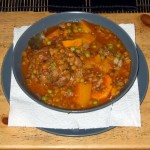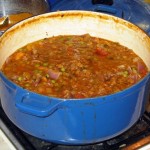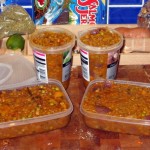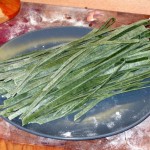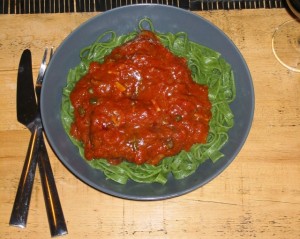Note: This entry has been restored from old archives.
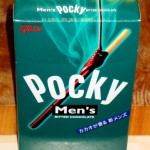
On Saturday we visited Oriental City, also known as “London’s real Chinatown”. Reading its tea-leaves will apparently tell you stories of demolition and replacement with new cultural icons, such as hardware stores. This “real Chinatown” proved to be up to the title, but don’t expect the tourist-ready gloss of London City’s Chinatown area. The Oriental City rendition of Chinatown is raw and gritty; from the old men in the food court chatting in Chinese and puffing on their cigarettes to the “Japanese Lifestyle” shop selling “essentials” from chisels and drill bits, through sushi making equipment to hair accessories. For those in Sydney who’re familiar with the places, my impression of the feel of Oriental City is: “Blacktown Westpoint and surrounds cross-bred with Parklea Markets”. Well, prior to the Westpoint upgrade – I haven’t been in the area since about 2002.
Feeling famished after a rushed morning with no breakfast we headed straight for the food court. The aroma in the air was unmistakeable… cigarette smoke. There are signs overhead delineating “smoking” and “non-smoking” zones, all they need to do now is teach smoke how to obey signs. We ordered ourselves some lunch anyway, Gyu Don for Kathlene and “Eel-and-Egg” Don for me, and with a little difficulty navigated our way to a patch of lesser smokiness. The meal was decent, large and cheap – above expectations for Japanese in a food court. There are about 15 different outlets in the food court, including Japanese, Thai, Drink/Sweets, Indian and several Chinese stores. The drinks/sweets stores later prove not to have any taro/yam/ube drinks at all (the purple ones).
We trundled around the centre and scoped out some of the non-food shops. There are a couple of decoration/junk/”artefact” shops, a furniture store with a 1.5m long jade boat, a shop with a huge range of ceramics, a Japanese “lifestyle essentials” shop, a real-estate agent, a small dojo and down the far end there seemed to be some sort of large “Sega”-branded arcade. The ceramics shop impressed us, shelves and tables stacked with plates, bowls and tea-sets; mostly in Japanese styles. We perused stacks of chop-sticks, various trinkets and Kathlene paid special attention to some large bento boxes. The Japanese “lifestyle essentials” shop amused us, a quick sample of some items you can find there: drill bits, bento boxes for kiddies, sushi making equipment, plastic replacement teapot handles, hair accessories, cookware, stacks and stacks of clear plastic storage boxes, pulleys in multiple sizes and items I couldn’t identify like small iron squares with nails sticking out.
We didn’t escape empty handed, we now have a tea-ball and some vegetable shape-cutters, perfect for our “Japanese lifestyle”. In wandering past the dojo we watched a video demonstration of spray-on-attacker permanent-UV-reactive-dye playing on a screen in their display window. Alongside this a random collection of knives, swords, pointy things and an entire wall hung with nunchaku. The dojo turned out to be the source of a heavy drum-beat we’d been hearing since shortly after lunch, inside were four youngsters learning to give a drum a good new-year style beating.
The final stop for the day was the most interesting: the supermarket. Unlike London Chinatown with it’s couple of streets and several smaller supermarkets/grocers the Oriental City mall contains just a single supermarket. It’s a big’n though, possibly offering a wider range of goods than found in Chinatown proper. One example: I found some shiro-miso and there were also several other misos, but all I can ever find in London is aka-miso [Update: I found a great stash of miso in London near “Chinatown” in this place: Japan Centre]. We even found a Filipino section, but try as we might we didn’t find some essential Filo foodstuffs. No belacan/baga-ong! There were some ube wafer sticks, but no other ube! Not satisfactory! Fermented shrimp aside, the range or food available in the supermarket is impressive. The distribution of goods is somewhat chaotic, we found kombu in three different locations. The fresh fruit & vege selection was good but low-volume, there were some interesting items and all the usuals, including: okra, bitter melon (two we do not buy, but I like to taunt Kathlene with them), banana leaves, dragon fruit, and eggplants in about 10 different combinations of shape, size and colour!
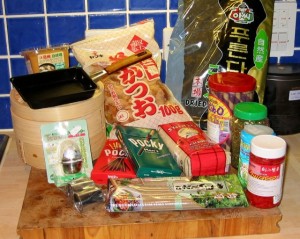
We passed many a freezer filled with the weird, wonderful and even slightly disgusting. Up the back we found a wall of meat with everything from steak to any extremity or organ you’d want to devour. The fish counter was… a little fishy. I didn’t like the look of it but there was a good selection of piscine wares, including cuts ostensibly suitable for sashimi (I had my doubts).
At one end of the supermarket we wandered into a land of cookware and rice. Rice can also to be found in several other locations, but at the far end you’ll find rice in huge sacks, stacked in piles on pallets – there must literally be tons of rice. The cookware selection is small but it fulfilled our bamboo steamer and Tamagoyaki pan quest, more ways to make dinner! To add to the days education we discovered that Pocky is for wussies, real men eat Men’s Pocky. Eventually we escaped; with a small hoard of oriental delights.

